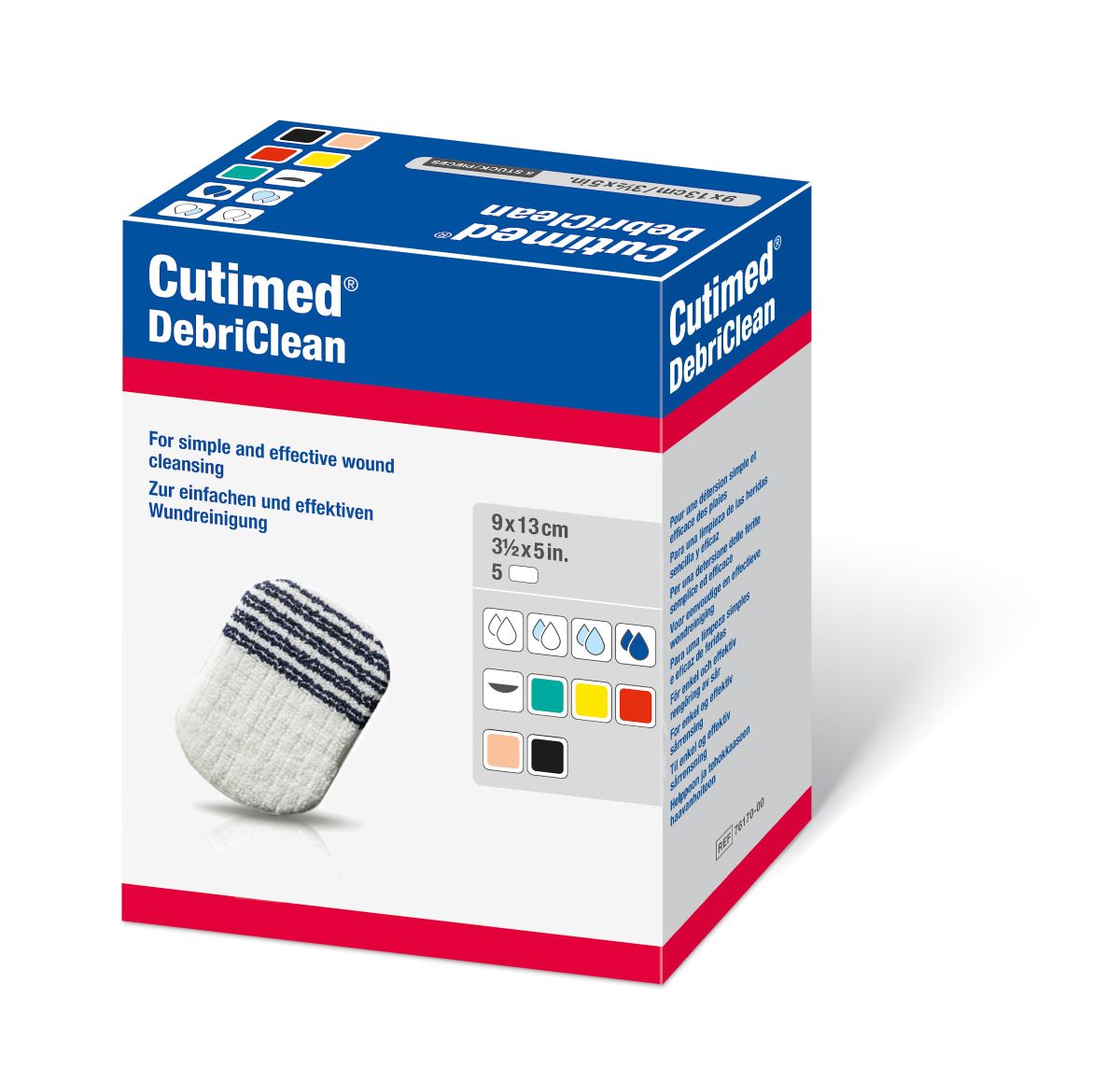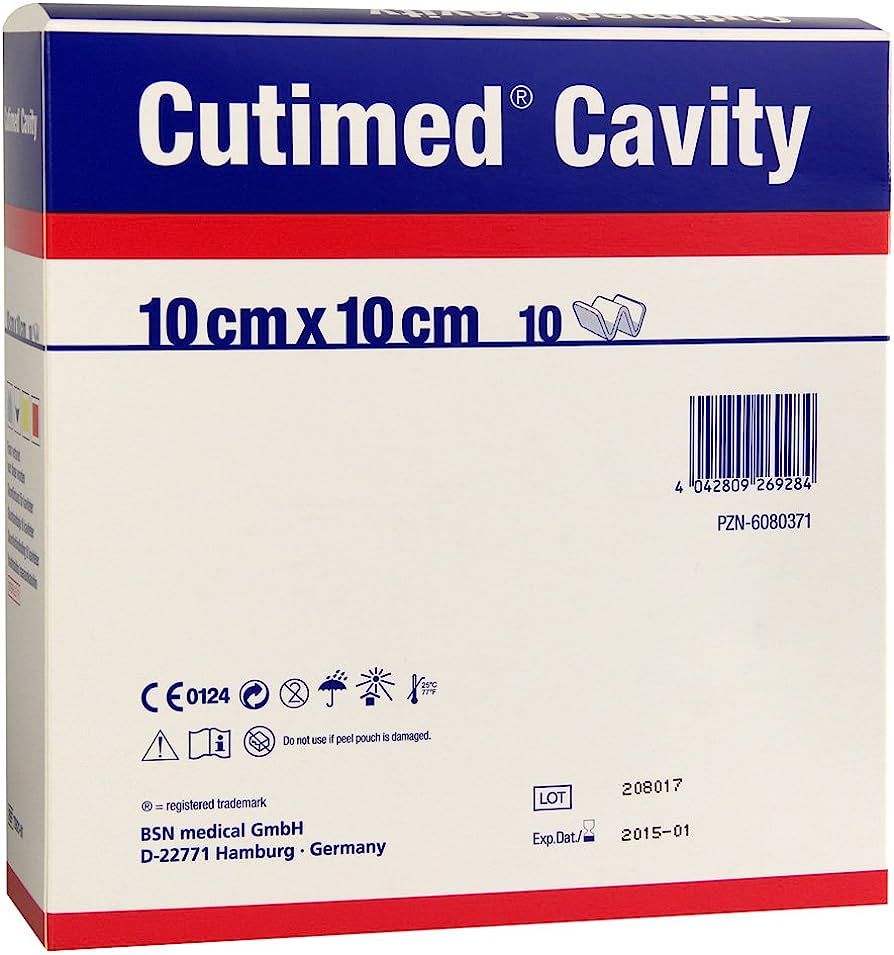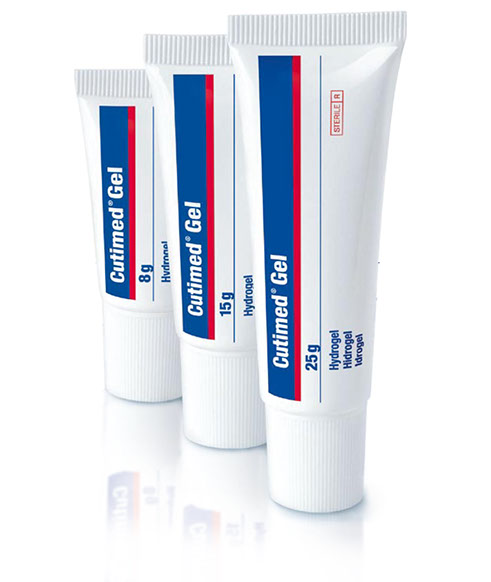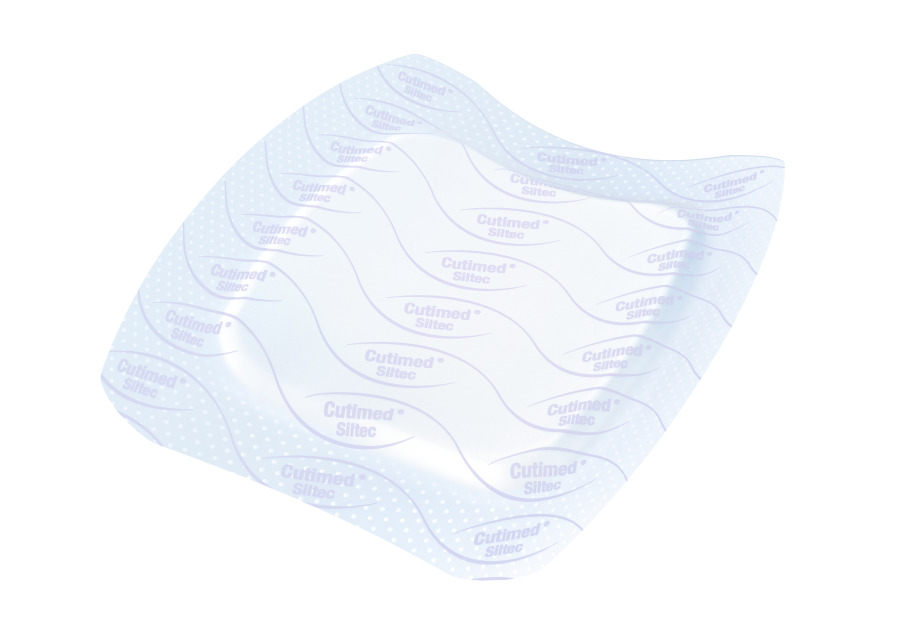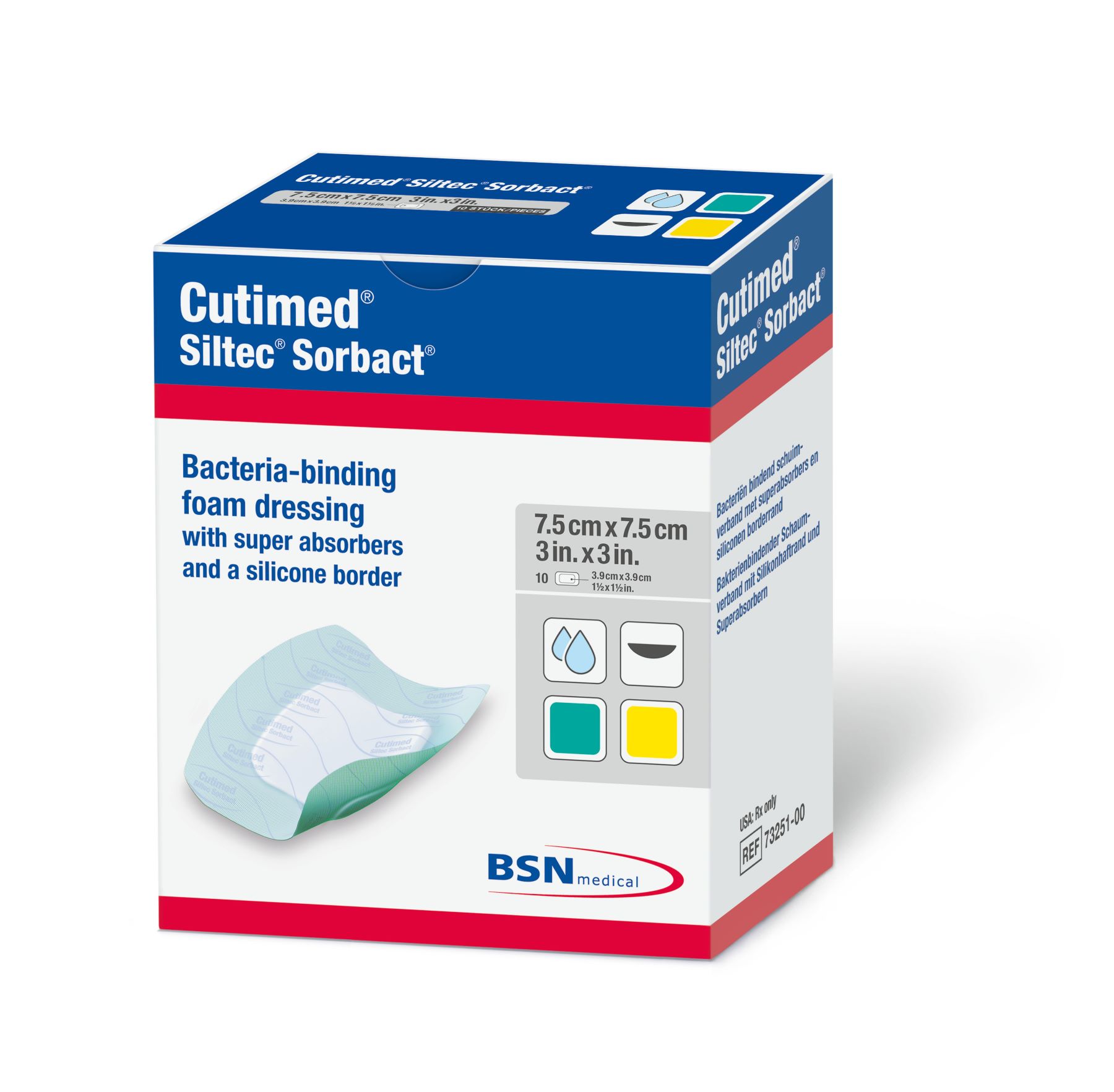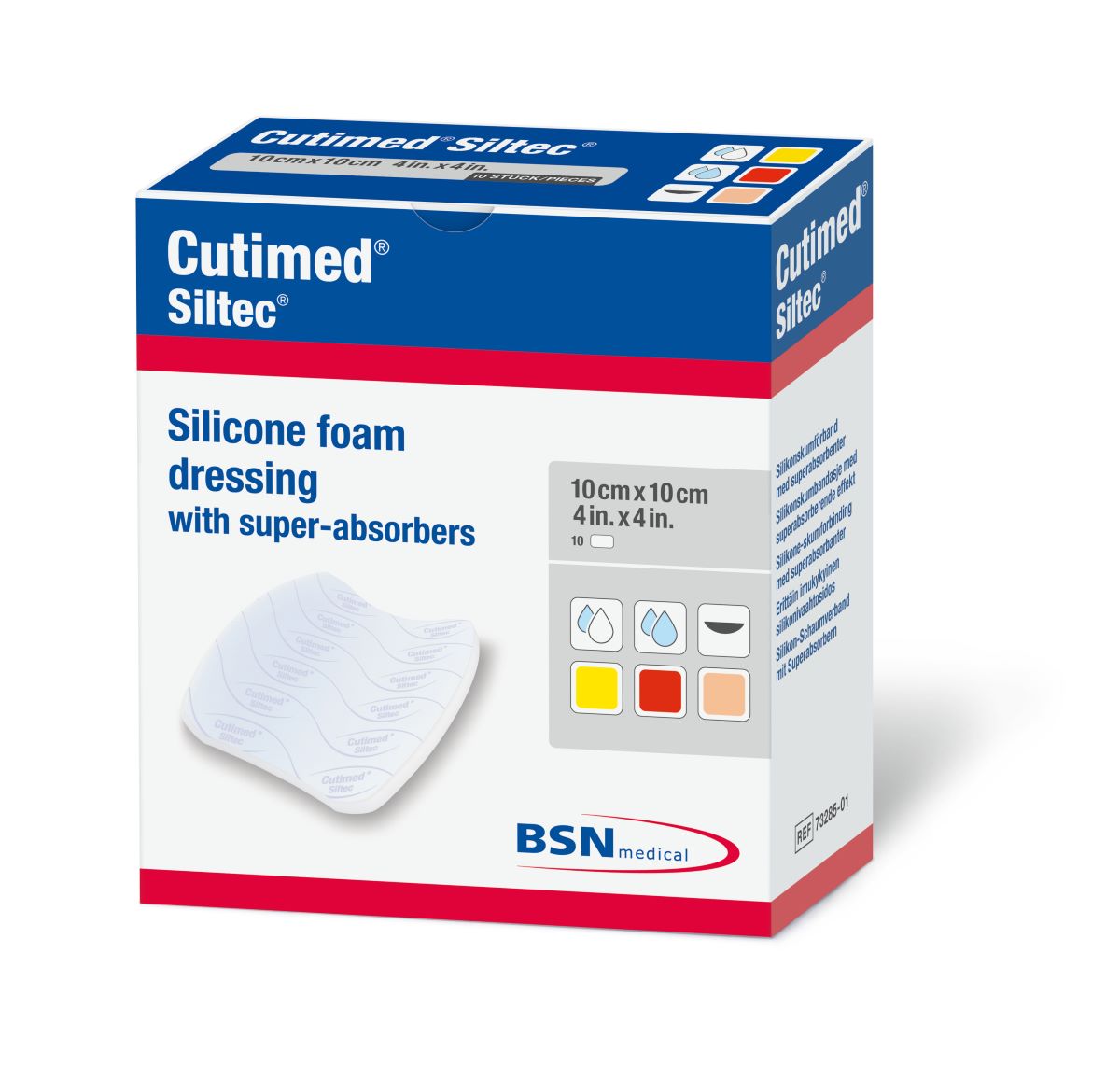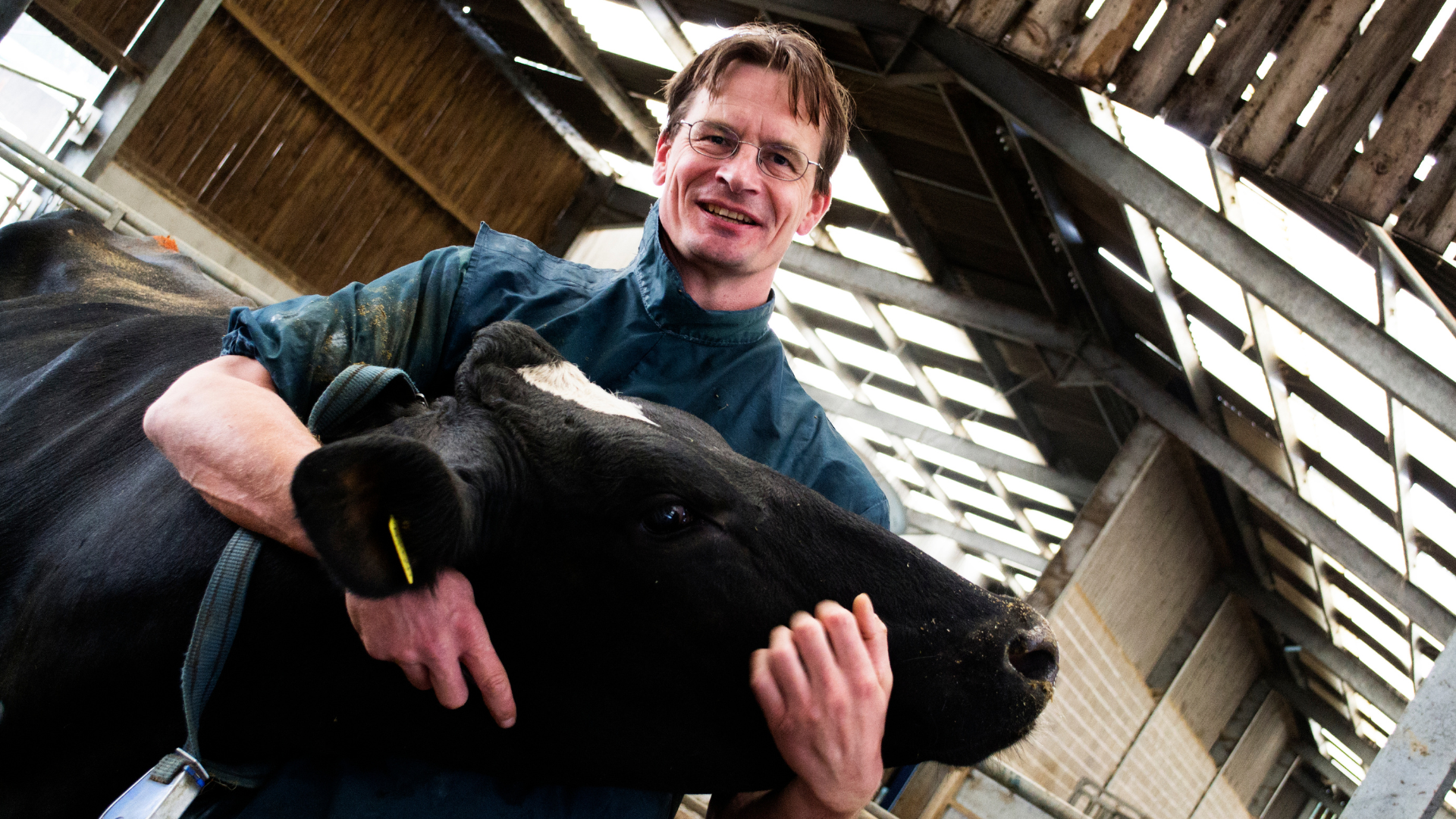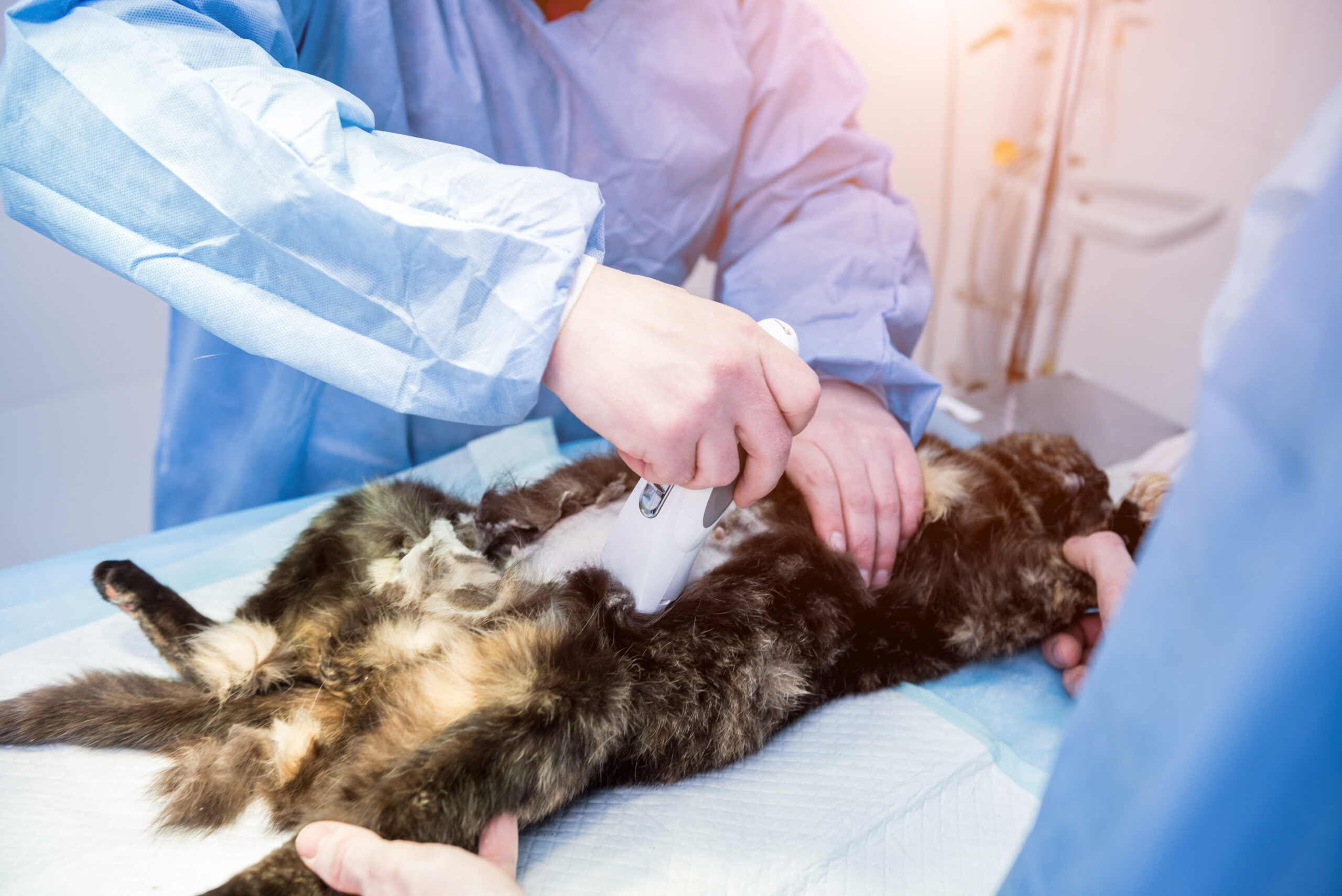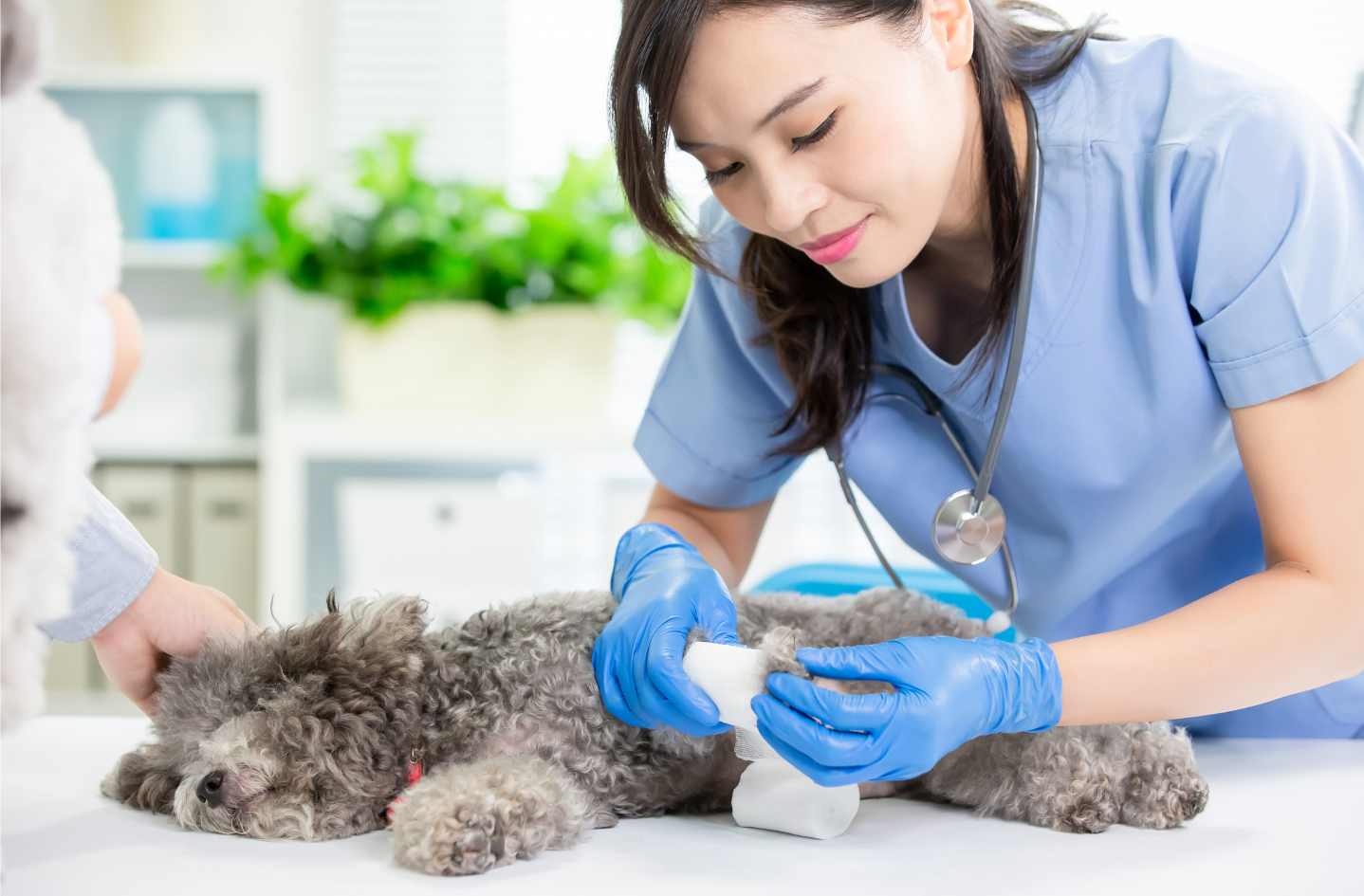By Cheyenne Somerfield, RVN and Inside Sales Specialist, Essity
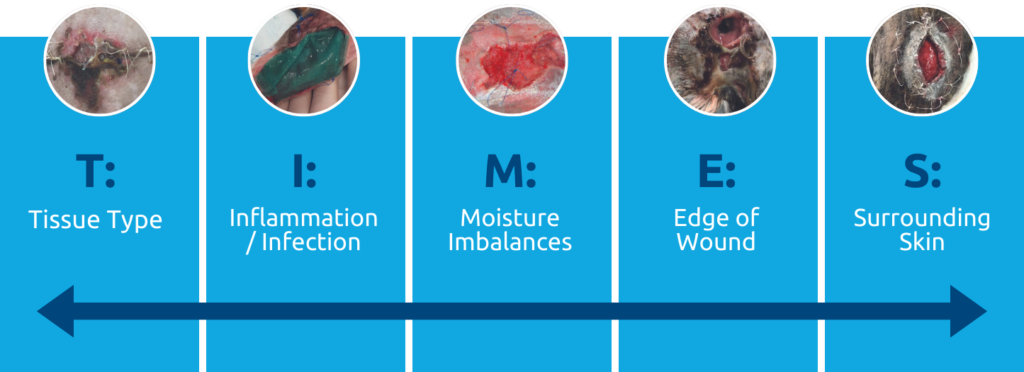
Wound care starts with effective wound bed preparation (WBP). WBP is the systematic approach clinicians use to identify and remove barriers to the healing process of the wound.
Holistic factors to consider include nutrition, hydration, medication, pain, owner influence. Wound bed preparation goes on to use the TIMES framework, as a structured approach to wound assessment. TIMES acknowledges -Tissue type, Infection, Moisture, Edge and Surrounding Skin.1 2
T -Tissue type – If dead or devitalised tissue has been identified through the wound assessment then debridement, within the management plan, needs to be considered. There is a need to remove necrotic, devitalised, sloughy tissue as these are a source of infection.
Debridement methods require varying levels of expertise. You need to consider your skills and competency to perform the task and refer to a specialist if necessary. Debridement methods include autolytic, mechanical, larval, sharp, surgical, and ultrasonic. Mechanical debridement is a simple method and uses a monofilament pad such as Cutimed® DebriClean. There is a need to say goodbye to “Wet–to-Dry debridement”.
Say Goodbye to Wet-to-Dry
The wet-to-dry method of debridement, the use of a saline-moistened gauze that is placed in the wound bed, left to dry and forcibly removed once the gauze is dried up, can be both painful and harmful to patients.3
It should only be considered when no alternative method is accessible. In fact, randomized control trials taken place in the past 30 years have persistently demonstrated that, “wet-to-dry dressings are not appropriate in any healthcare setting.”4
6 key reasons to consider alternatives to wet-to-dry dressings:
#1. Wet-to-Dry dressings are linked to an increased risk and incidence of wound infections.5
#2. These dressings dry out the wound bed, creating a suboptimal environment for cells during the healing process (wounds heal more efficiently when moisture levels are balanced).6
#3. During the ripping process, any dried contents on the swab might be aerosolized – this disperses bacteria into the air from the wound.9
#4.The non-selective nature of these dressings can be damaging to vital cells, leukocytes, and viable tissue. These will be removed in the ripping process. They will also be dried out.8 Newer forms of mechanical debridement like Cutimed DebriClean debridement pads are designed to be atraumatic to wound cells.
#5. Upon removal, these cause significant immediate and prolonged wound pain, linked with healing delays. Pain can lead to reduced vascular supply to the wound bed, reducing oxygen and blood supply (both of which slow healing).7
#6. The solution used on the swabs packed into the wound create a cooling process. It can take up to 3 hours for cells to regain activity once cooled below body temperature.10 This could leave WBCs potentially inactive during this time, allowing microbes time to replicate.11 (It is widely acknowledged that solutions should be warmed when lavaging.)
The challenge of wound infection in animal health:
The I in the TIMES framework refers to inflammation/wound infection. Wound infections in veterinary medicine can pose significant concerns for veterinarians and owners, due to their impact on animal welfare, recovery times, and healthcare costs.12 Early detection of an infection is crucial for wound healing but can be very challenging. Owners must detect very slight changes in their pets to pass on to clinicians. For veterinarians, diagnosis of a wound infection without patient input and costly diagnostics can be very difficult.
While wound infections were previously treated with antibiotics at the first subtle sign of localised infection, there is rising concern that this supports the widespread prevalence of antimicrobial resistance. Therefore, it is paramount that wound infections are prevented and diagnosed early, and treated with wound cleansing, debridement, and appropriate dressings that potentially reduce the need for systemic antibiotics. 13
Antimicrobial Resistance (AMR)
Antimicrobial resistance is a pressing global health and socioeconomic crisis already impacting health. The overuse and misuse of systemic antibiotics is the leading cause of the development of resistant strains. Proactively treating the wound at the site in the early stages of the IWII wound infection continuum (IWII 2022) can prevent the wound from becoming infected.14
Preventing infection is part of an antimicrobial stewardship strategy to reduce antimicrobial resistance. The use of systemic antibiotics is recommended in established infections after a wound has reached the spreading or systemic wound infection stages.15 The IWII Wound Infection Continuum is a well-acknowledged educational tool that provides a framework to conceptualise the impact that microorganisms have on the host, the wound and wound healing.16
Adaptation of the wound infection continuum
Early intervention supports the use of proactive interventions in chronic wounds with a high risk of infection during the contamination and colonisation stages. This can potentially prevent a wound infection from moving through the infection continuum and promote wound healing, hopefully reduce the need for treating the wound with antibiotics.
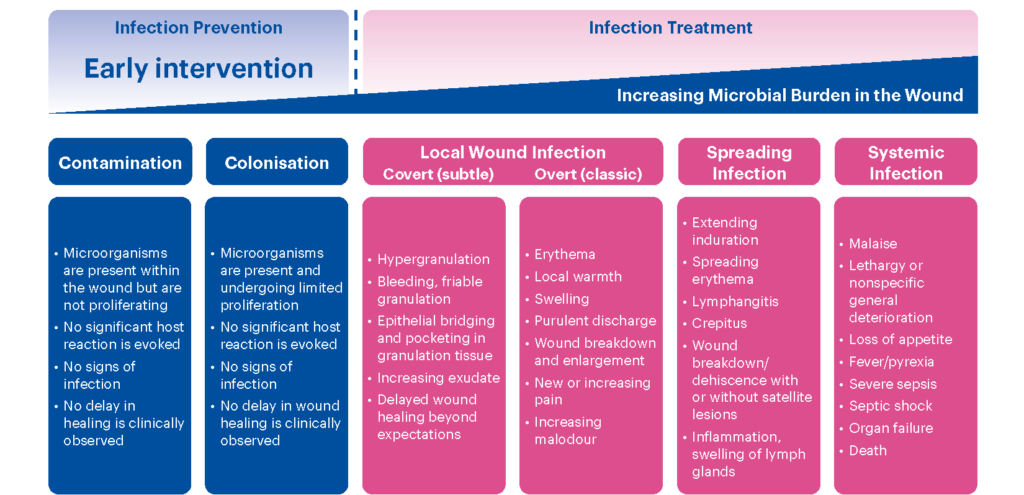
Copyright of Wounds International (2022) adapted with permission of Wounds International
Understanding biofilms and biofilm management
There is now an acceptance of the association between biofilms, delayed wound healing and the risk of wound infection.17
Biofilms are encapsulated microbial communities within a protective viscous extracellular matrix, which becomes permanently adhered to the wound bed. They are difficult to observe, and swabbing will not determine if a biofilm is present. Mature biofilms can create a viscous ‘shiny’ film over the wound bed. 18
There is a need to suspect the presence of a biofilm in wounds that exhibit signs and symptoms of chronic inflammation and fail to heal at the expected rate with optimal care.20 Removing biofilm is part of the wound bed preparation process and an essential step to facilitate healing. The principles of wound biofilm management include debridement, vigorous cleansing, prevention of recontamination with microorganisms and supress biofilm reformation.
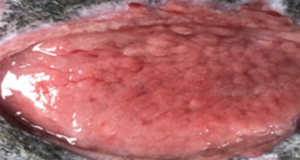
Image source: Amanda Curtis RVN, Essity
The latter components of TIMES:
M – Moisture
Effective exudate management can promote healing, improve quality of life and enhance healthcare effectiveness.
E – Edge
Where wound edges are rolled management of the wound is going to be complex and may need early specialist referral.
S – Surrounding skin
The condition of surrounding skin such as maceration, excoriation and oedema can compromise wound healing.
Wound healing is a dynamic process, meaning that your assessment and management needs to be constantly evaluated. If the current treatment plan is not working, consider a reassessment of TIMES and modify the care plan as needed.
The role of dressings in preventing wound infection
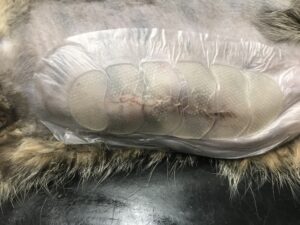
There are a wide range of advanced wound care dressings on the market that can be used to manage and/or treat wound infections. Some contain active antimicrobial agents that have a disruptive or biocidal effect on microbes, e.g. silver, iodine. Many are non-selective and may be cytotoxic, meaning that they may kill skin and tissue cells involved in wound repair.21
It is recommended to use topical antimicrobial dressing to manage wounds exhibiting signs of local wound infection or wounds suspected or confirmed as having biofilm.22
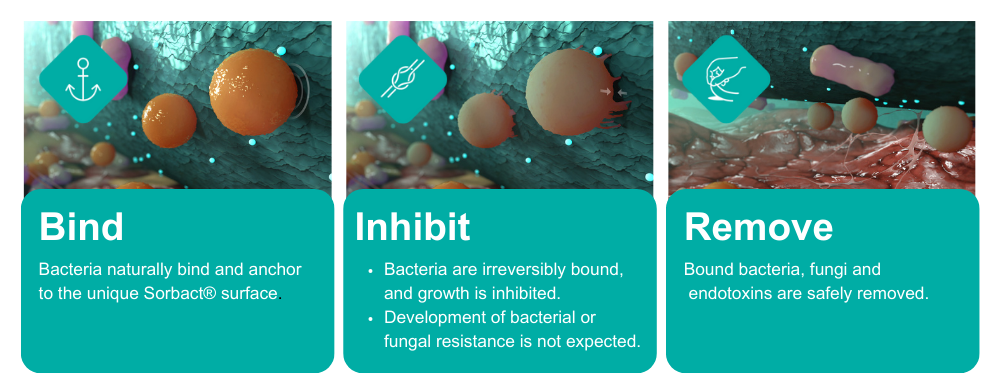
Other dressings, such as Sorbact® Technology, have a physical mode of action that bind, inhibit, and remove microorganisms from the wound.23
No active substances are released into the wound24 so there are no known contraindications, and the development of bacterial and fungal resistance is not expected. Dressings with this physical mode of action are effective options for preventing wound infection without the risk of cytotoxicity and antimicrobial resistance developing.25
Click here for references
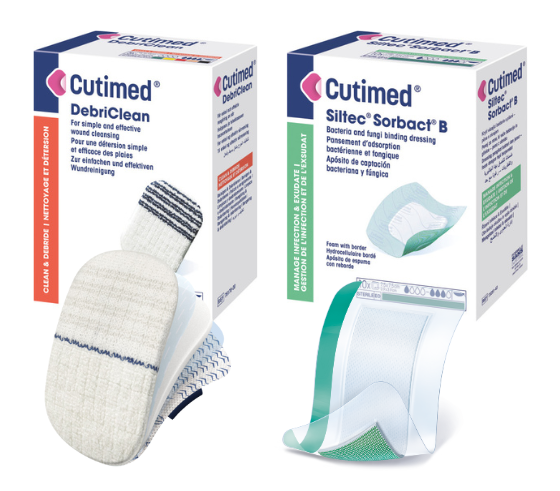
Cutimed DebriClean
Cutimed DebriClean is a mechanical debridement pad to support with wound bed preparation. The gentle looped monofilament fibers are specially designed to remove and retain slough, biofilm and bacteria. Based on the IWII guidance, wound bed preparation and debridement should be considered in all chronic wounds.
Click here for more product information
Sorbact Technology
The innovative Sorbact® Technology binds microbes with a purely physical mode of action. The bound microbes are inhibited, preventing them releasing endotoxins and withdrawing them from the cellular activity within the wound, enhancing wound healing.26 When the dressing is physically removed from the wound, so are the bound microbes.
Sorbact® Technology prevents (Stanirowski 2016) and treats (Ciliberti 2016) wounds infections, by reducing the the bioburden (Kammerlander, 2008) and can be used at all wound stages. With no known contraindication the Sorbact® technology can be used on the most delicate patients. With a treatment duration of up to 7 days and the ability to reduce wound malodor, the Sorbact® technology simplifies wound care.
Click here for more product information
Essity additional support for practices
Essity are proud to support your practice’s education journey with different learning styles and a wide range of topics.
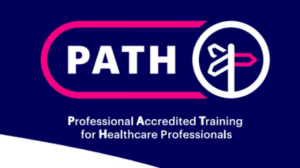
Register with PATH to take a look at the options available
Practice Education
Essity offers virtual sessions to UK practices on evidence-based wound care. These are complementary, held via Teams and are accompanied by an advanced wound dressing pack and CPD certificates.
Animal Health topics include:
- Biofilms and infection
- Post-operative wound management
- Exudate and debridement.
Visit www.nvsweb.co.uk for examples of the educational sessions available.
One-to-one wound case support
Essity can assist practices by providing wound management support for individual cases, using an evidence-based approach to wound bed preparation and dressing selection.
Email animalhealthcare@essity.com for more information
Veterinary conference workshops
Essity conducts Advanced Wound Care and Dressing Workshops at many of the largest Veterinary Conferences in the UK for veterinary nurses, vets, and students.
These workshops provide clinical staff with the essential skills required to assess traumatic, infected, and/or postoperative wounds and to select appropriate dressings for each.
Email animalhealthcare@essity.com for more information
More about the author:
Cheyenne Somerfield, Inside Sales Specialist, Essity

Cheyenne is a Registered Veterinary Nurse with clinical interests in emergency and critical care, wound management, and nurse clinics. She has a Bachelor of Arts in International Relations, Chinese and Spanish, also being trilingual in these languages. Originally from Washington D.C., she has spent a large amount of time travelling and studying around the world, before settling down in the UK. Cheyenne is the Essity Inside Sales Specialist and is on hand to deliver wound management education and provide support on the Leukomed and Cutimed advanced wound care ranges available at Essity.
The article was originally posted in The Cube magazine, February 2025 issue. Click here to read the magazine.









